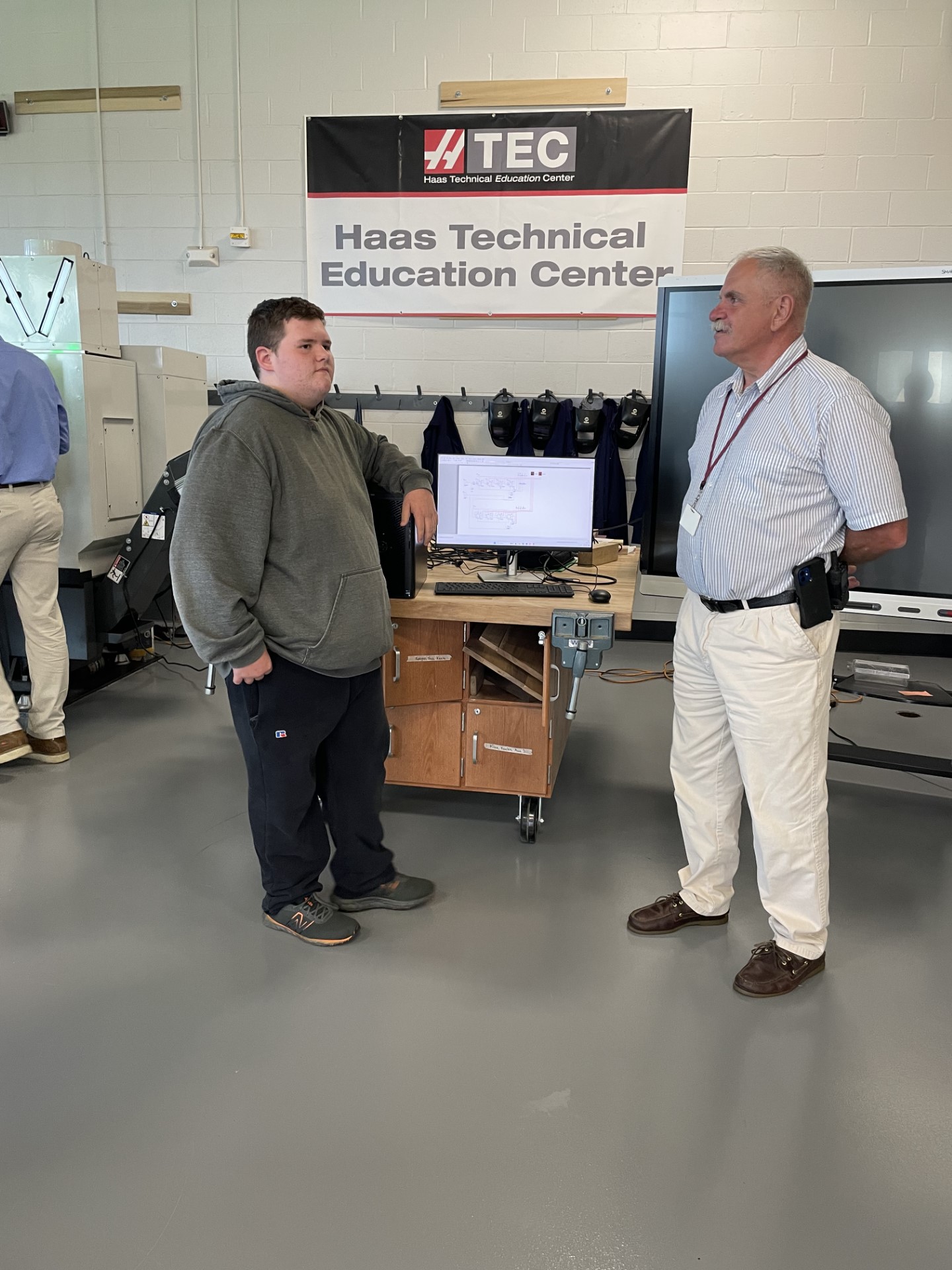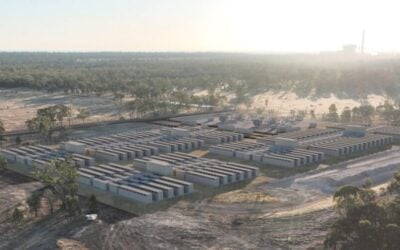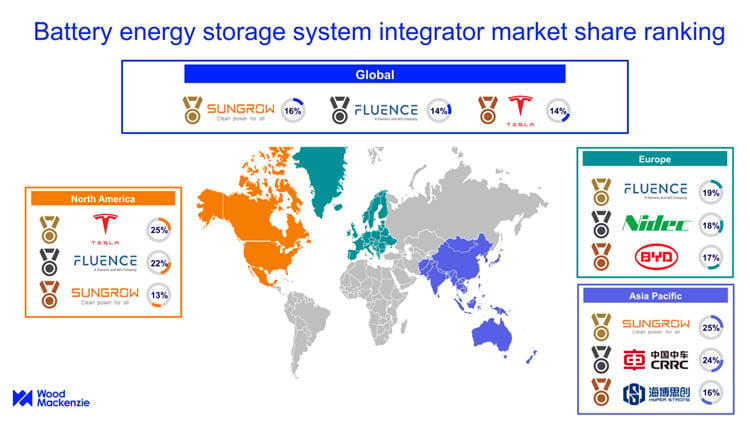Report on Finland’s Commercial Sand Battery and its Contribution to Sustainable Development Goals
Introduction: A Strategic Innovation for Global Sustainability
Finland has launched the world’s first commercial sand battery, a thermal energy storage system designed to support the global transition to renewable energy. This technology stores excess electricity from variable sources like wind and solar as heat in sand, providing a low-cost, long-duration solution for decarbonizing heating sectors. This innovation directly addresses several United Nations Sustainable Development Goals (SDGs), positioning it as a critical tool for climate action and sustainable development.
- SDG 7 (Affordable and Clean Energy): By providing a cost-effective method to store renewable energy, the technology enhances energy reliability and accessibility.
- SDG 9 (Industry, Innovation, and Infrastructure): It represents a significant advancement in clean technology and resilient energy infrastructure.
- SDG 11 (Sustainable Cities and Communities): The system integrates with district heating networks to create more sustainable and resilient urban energy systems.
- SDG 13 (Climate Action): Its primary function is to reduce greenhouse gas emissions by replacing fossil fuels in the heating sector.
Technological Framework and Operational Mechanics
Core Process
The sand battery operates on a principle of resistive heating within a heavily insulated steel silo. This process is central to its function as a thermal storage unit.
- Surplus electricity from renewable sources is used to heat a granular medium, primarily sand, to temperatures between 500 and 600 degrees Celsius.
- The stored heat is retained with minimal loss for extended periods, lasting for months.
- The system discharges this thermal energy to supply heat for district heating networks, residential buildings, and industrial processes.
Key Performance Characteristics
The design offers distinct advantages over conventional chemical batteries for thermal applications.
- High Capacity: A single installation can store up to 100 megawatt-hours of thermal energy.
- Longevity and Durability: The system experiences virtually no material degradation over time, ensuring a long operational life.
- Low Cost: It utilizes abundant and inexpensive materials, primarily sand and steel.
- High Volumetric Energy Density: It efficiently stores a large amount of energy in a compact space.
Contribution to Global Sustainability Targets
Advancing SDG 7 (Affordable and Clean Energy) and SDG 13 (Climate Action)
The sand battery is a purpose-built solution for decarbonizing the heat sector, which is a major contributor to global carbon emissions. Its deployment is a direct measure for climate action.
- Stabilizing Renewable-Heavy Grids: It stores excess wind and solar power, mitigating seasonal grid imbalances where renewable generation is high but heat demand is low (e.g., summer).
- Displacing Fossil Fuels: The technology enables towns and industries to phase out carbon-intensive energy sources like peat and coal used in district heating.
- Decarbonizing Industry: It provides a stable, low-maintenance source of low-to-mid-temperature heat for sectors such as food production and manufacturing.
Fostering SDG 9 (Industry, Innovation, and Infrastructure) and SDG 11 (Sustainable Cities and Communities)
Finland’s ambitious climate target of achieving carbon neutrality by 2035 provides an ideal testbed for this innovation. The technology supports the development of sustainable infrastructure critical for modern cities and industries.
- It integrates seamlessly with existing district heating networks, a common feature in Nordic cities, making urban energy systems more sustainable.
- The technology promotes industrial sustainability by offering a practical, cost-effective alternative to electrifying all industrial heat loads.
- It demonstrates a scalable model for other cold-climate regions aiming to decarbonize their heating sectors, including the Baltic states and northern Europe.
Economic Analysis and Material Responsibility
Cost-Effectiveness and Supply Chain Resilience
Compared to conventional storage solutions like lithium-ion batteries, the sand battery offers significant economic advantages and aligns with principles of responsible resource management.
- Low Capital and Lifecycle Costs: The use of abundant materials like sand and steel dramatically reduces upfront investment and long-term maintenance expenses.
- Alignment with SDG 12 (Responsible Consumption and Production): The system avoids reliance on rare earth elements and volatile global supply chains, promoting the use of non-toxic, locally sourced materials.
- Operational Reliability: Its simple and durable design minimizes downtime and operational complexity, enhancing system resilience.
Challenges and Strategic Deployment
Technical and Market Limitations
While highly effective for thermal storage, the technology has specific limitations that define its optimal applications.
- Inefficient Electricity Conversion: Converting the stored heat back into electricity is currently technically complex and economically unviable.
- Gradual Thermal Loss: The system is subject to slow heat dissipation, which can impact efficiency over very long storage durations.
- Lack of Fast-Response Capability: It is not suitable for applications requiring rapid charge/discharge cycles, such as grid frequency regulation.
- Stationary Application: The technology is designed for fixed installations and is not applicable for mobile use.
Conclusion: A Niche Solution in a Diversified Energy Strategy
The sand battery effectively fills a critical gap in the energy storage market for long-duration, low-cost thermal applications. It is not a universal solution but a specialized tool that, when integrated into a diversified energy strategy, can significantly accelerate decarbonization efforts. By supporting the widespread adoption of renewable energy and providing a sustainable heating source, this technology offers a practical pathway toward achieving key Sustainable Development Goals related to energy, climate, industry, and urban living.
SDGs Addressed in the Article
- SDG 7: Affordable and Clean Energy
- SDG 9: Industry, Innovation, and Infrastructure
- SDG 11: Sustainable Cities and Communities
- SDG 13: Climate Action
Identified SDG Targets
SDG 7: Affordable and Clean Energy
- Target 7.2: Increase substantially the share of renewable energy in the global energy mix. The article focuses on a technology that stores “surplus renewable electricity — typically from wind or solar,” making these variable sources more reliable and thus increasing their potential share in the energy grid.
- Target 7.a: Enhance international cooperation to facilitate access to clean energy research and technology… and promote investment in energy infrastructure and clean energy technology. The article describes a new “clean energy innovation” from Finland with “strong potential throughout the Nordics, Baltic states and northern Europe,” highlighting the potential for technology transfer and investment in new energy infrastructure.
SDG 9: Industry, Innovation, and Infrastructure
- Target 9.4: Upgrade infrastructure and retrofit industries to make them sustainable. The sand battery is presented as a way to “decarbonize residential heating and industrial processes,” such as food production and manufacturing, by replacing fossil fuel-based systems. This represents a sustainable upgrade to industrial and municipal infrastructure.
- Target 9.5: Enhance scientific research, upgrade the technological capabilities of industrial sectors… encouraging innovation. The article details a “deceptively simple yet technically sophisticated process” that sets a “new benchmark in thermal storage,” which is a clear example of technological innovation and enhancement.
SDG 11: Sustainable Cities and Communities
- Target 11.6: Reduce the adverse per capita environmental impact of cities. The technology supports the “phasing out peat and coal” in towns’ district heating networks, directly reducing the carbon footprint and environmental impact of urban energy consumption.
- Target 11.b: Implement integrated policies and plans towards… climate change mitigation and adaptation. The article mentions Finland’s national strategy and “supportive municipal policies” that enable the deployment of technologies like the sand battery, showing an integrated approach to making communities more resilient and sustainable.
SDG 13: Climate Action
- Target 13.1: Strengthen resilience and adaptive capacity to climate-related hazards. The sand battery enhances energy system “resilience” by storing energy for long durations, which helps stabilize local grids against the intermittency of renewables and seasonal demand shifts, strengthening adaptive capacity.
- Target 13.2: Integrate climate change measures into national policies, strategies and planning. The article explicitly cites Finland’s national policy: “aiming for carbon neutrality by 2035.” The sand battery is a technological solution that helps implement this national climate strategy.
Implied Indicators for Measuring Progress
SDG 7: Affordable and Clean Energy
- Share of renewable energy: The article’s focus on storing “excess wind and solar energy” implies that a key metric for success is the increased percentage of renewables in the total energy consumption, particularly for heating.
- Installed capacity of clean energy technology: The mention of a pilot project storing “up to 100 megawatt hours of thermal energy” provides a specific measure of the technology’s capacity, which can be tracked as an indicator of investment and deployment.
SDG 9: Industry, Innovation, and Infrastructure
- CO2 emissions from industry and heating: The article states that the technology helps “decarbonize” sectors and that “fossil fuel plants generate nearly 40% of the world’s carbon dioxide emissions.” A direct indicator would be the reduction in CO2 emissions per unit of heat or industrial output.
SDG 11: Sustainable Cities and Communities
- Reduction in fossil fuel use for municipal heating: The article highlights the “phasing out peat and coal” in district heating networks. Progress can be measured by tracking the reduction in the volume or percentage of these fuels used in cities.
SDG 13: Climate Action
- Progress towards national carbon neutrality goals: Finland’s target of “carbon neutrality by 2035” is a high-level indicator. The contribution of technologies like the sand battery can be measured by their impact on the national emissions inventory.
Summary Table of SDGs, Targets, and Indicators
| SDGs | Targets | Indicators |
|---|---|---|
| SDG 7: Affordable and Clean Energy | 7.2: Increase the share of renewable energy. 7.a: Promote investment in clean energy technology. |
– Share of renewable energy (wind, solar) in the heating sector. – Installed thermal energy storage capacity (e.g., 100 megawatt hours). |
| SDG 9: Industry, Innovation, and Infrastructure | 9.4: Upgrade infrastructure and industries to be sustainable. 9.5: Enhance scientific research and encourage innovation. |
– Reduction in CO2 emissions from industrial processes and heating. – Investment in and adoption of new thermal storage innovations. |
| SDG 11: Sustainable Cities and Communities | 11.6: Reduce the adverse per capita environmental impact of cities. 11.b: Implement integrated policies for climate change mitigation. |
– Reduction in the use of fossil fuels (peat, coal) in municipal district heating. – Number of municipal policies supporting clean energy infrastructure. |
| SDG 13: Climate Action | 13.1: Strengthen resilience and adaptive capacity. 13.2: Integrate climate change measures into national policies. |
– Reduction in downtime and increased grid stability. – Progress toward national emission reduction targets (e.g., Finland’s 2035 carbon neutrality goal). |
Source: energytech.com







